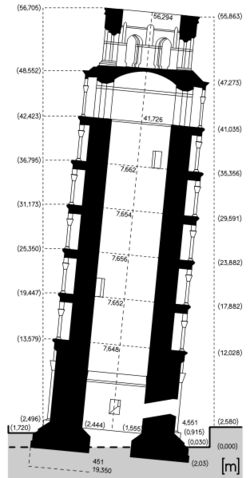Standing On The Shoulders Of Giants - Time Taken To Fall
 By
recreating
Galileo's famous Leaning Tower of Pisa experiment, we obtained the following table of data which indicates the vertical height
that the cannonballs dropped
seconds after being released till it hits the ground and comes to rest.
By
recreating
Galileo's famous Leaning Tower of Pisa experiment, we obtained the following table of data which indicates the vertical height
that the cannonballs dropped
seconds after being released till it hits the ground and comes to rest.
| time | 0 | 1 | 2 | 3 | 4 | 5 |
| height | 0 | 5 | 19 | 44 | 56 | 56 |
Which of the following is the best approximation for the time taken for the cannonballs to reach the ground ?
Image credit: Wikipedia F l a n k e r
This section requires Javascript.
You are seeing this because something didn't load right. We suggest you, (a) try
refreshing the page, (b) enabling javascript if it is disabled on your browser and,
finally, (c)
loading the
non-javascript version of this page
. We're sorry about the hassle.
Those who got it wrong are likely to have chosen 4. We know that the height of the tower is 56 (see previous question), and that it took at most 4 seconds to drop all the way. However, this does not imply that it took (close to) 4 seconds to reach the ground.
Solution: Acceleration due to gravity is a constant, and hence we get that d ( t ) = A t 2 , for some constant A , as long as the object is still falling. Looking at d ( 3 ) , a good approximation for A is 9 4 4 . Hence, we want to solve 5 6 = 9 4 4 T 2 ⇒ T = 3 . 3 8 . As such, we choose the value of 3.5.
Of course, if you know that gravitational acceleration is 9 . 8 1 m / s 2 , then you know that d ( t ) = 4 . 9 t 2 , which is what we used to model the distance traveled (with slight rounding).